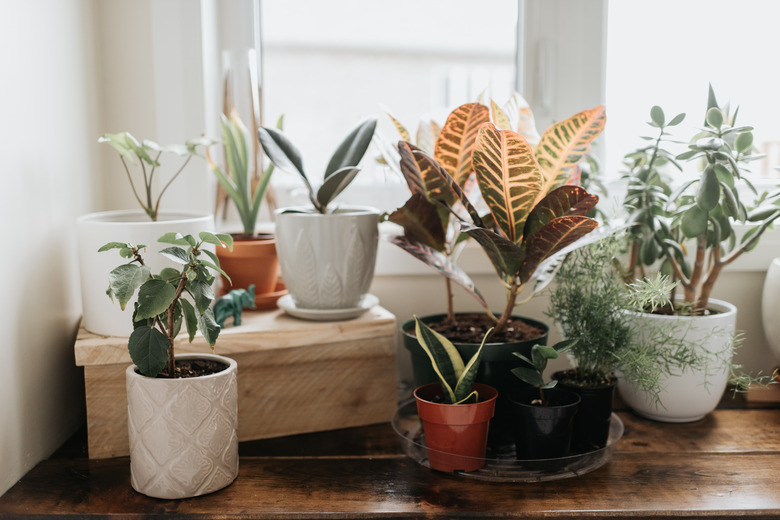What To Put Under House Plants For Drainage
As basic as water is to a plant's survival, it can also cause problems when a plant gets too much moisture or sits in excess water. Plants that sit in water are susceptible to moldy soil or root rot, which can kill your plant quickly. Providing a plant with drainage underneath the pot can prevent these problems. There are a few ways to provide drainage, depending on the type of pot or planter you use.
Double Pot Drainage
Double Pot Drainage
The double pot method of drainage can ensure that your plants don't sit in water once they soaked up the amount of moisture they require. You're essentially choosing a larger decorative pot to hide the basic grow pot that has exceptional drainage. When you water your plant, the excess water drains out of its pot and into the decorative pot, where it stays away from the plant's roots.
The plant should be placed in a simple pot that is large enough to hold the roots in potting soil. Choose a pot that has good drainage. That pot should be placed into a larger pot without drainage. Look for a pot that hides the grow pot that you're putting your plant in. Place an inch or 2 of non-porous material, such as gravel, marbles, or pebbles, in the bottom of the decorative pot, and put the grow pot inside on top of the material.
Single Pot Drainage
Single Pot Drainage
For single pots that have no drainage holes, non-porous materials can provide a barrier between sitting water at the bottom of a pot and the roots themselves. Marbles, gravel, or pebbles can act as the barrier. These materials will not hold water; rather the water will run past them and sit at the bottom of the pot, away from the soil and roots. However, you can still overwater the plant enough that the soil stays saturated and the roots can rot.
To use the gravel in a single pot without drainage, pour a 2-inch layer of gravel into the bottom of the pot. Add potting soil and plant your plant as you normally would.
Built-In Drainage Trays
Built-In Drainage Trays
Some ceramic and clay pots are fused to a drainage tray. They have small molded or drilled drainage holes around the bottoms of the pots. These holes expel the excess water, where it's held in the tray. This can help to keep excess water away from the roots and soil, but the tray needs to be emptied regularly or the soil will soak the water back into the pot. The built-in trays aren't removable, so the pot will need to be tilted over a sink or outdoors to get rid of the excess water.
Separate Drainage Trays
Separate Drainage Trays
Pots that have drainage holes without trays can be placed on separate trays that can be removed to pour off excess water. These trays can be purchased at many garden supply centers or home improvement stores, but you can also use anything flat with a lip around it. Large plates, dinner trays, or pie tins can be used for larger indoor plants, while saucers and bowls can be used for small houseplants.
